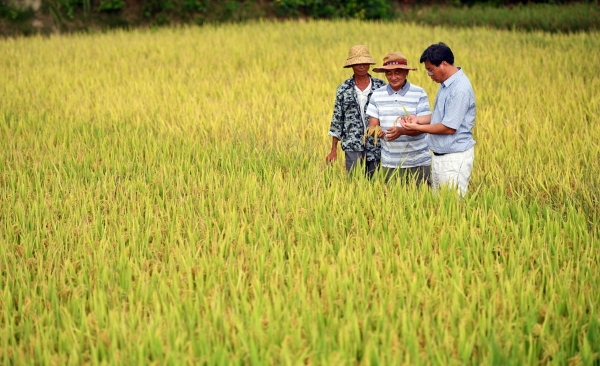Scientists bring fields in Hainan back to life
 0 Comment(s)
0 Comment(s) Print
Print E-mail China Daily, April 6, 2018
E-mail China Daily, April 6, 2018

The 62-year-old farmer, Lin Minghuan, says he felt he was in an abyss after seeing typhoon Rammasun ruin all his crops in minutes in Wenchang on the eastern coastal Hainan island on July 18, 2014.
Rammasun, which means the god of thunder in Thai, has been removed from the typhoon name list due to its destructive strength that left more than 7 million people in distress in Vietnam, the Philippines, China's Guangdong province and the Guangxi Zhuang autonomous region, with Hainan island the epicenter of the disaster.
The typhoon was the most serious in 70 years and killed 25 people, with six missing in Hainan, according to local reports.
"We were heartbroken when we saw nothing would grow on the once fertile land after the fields were filled with snow-white salt crystals," says Lin from Fuqian township where Rammasun made landfall.
He adds that at that time many people abandoned farming and went to search for jobs in the cities, and that the devastating scenes caused by typhoon Rammasun and Seagulls in July and September 2014 left painful memories for people in Hainan.
It was then that Jiang Xingyu came to the town with his team from Hainan University, to revive the sea-water filled fields.
The two typhoons-Rammasun and Seagulls-that hit the island province within two months, destroyed 2,700 hectares of farm land.
Speaking about his experiences, Jiang, the head of the Hainan Key Laboratory of Biotechnology for salt-tolerant crops, says: "At first, we were not welcome. We were sneered at by the villagers as scholars from the city."
But Jiang, who has spent more than 20 years in Shandong, Henan and Zhejiang; and abroad in the United States, Spain and Israel, doing research on salt- and alkaline-tolerant seeds was not fazed by the hostility.
Explaining the issue faced in the province, he says: "Utilization of some seashore shallows in Hainan, with its coastline zigzagging for 1,823 kilometers, is pretty low due to high salinity."
And, in total, China has as much as 33 million hectares of saline and alkaline land which have not been developed even as the country strives to keep its usable farmland above 120 million hectares.
"So, if parts of the saline and alkaline areas can be turned into arable land, the country's agriculture will have much more space, and farmers will be benefited."
Speaking about Jiang's work, Lin says: "I was shocked to see that after a few months of work by Jiang's team, our fields were covered in salt-tolerant ice plants that we sell at around 15 yuan ($2.3) for half a kilogram to hotels and restaurants (better than the price earned for local vegetables)."
"We have experienced the power of science and will be happy if Jiang guides us further," he says.
Giving details about the process, Jiang says: "The sorting of salt-tolerant seeds takes time, is tedious and often we did not get ideal results.
"For instance, we worked with more than 400 varieties of paddy seedlings, and have finally harvested only three kinds of rice seeds.






Go to Forum >>0 Comment(s)